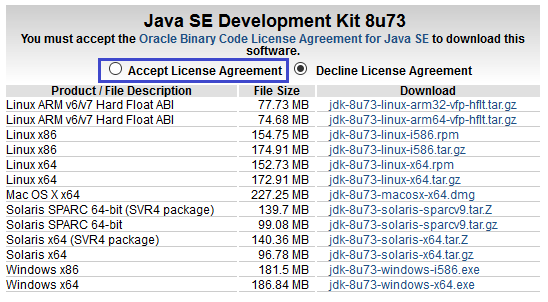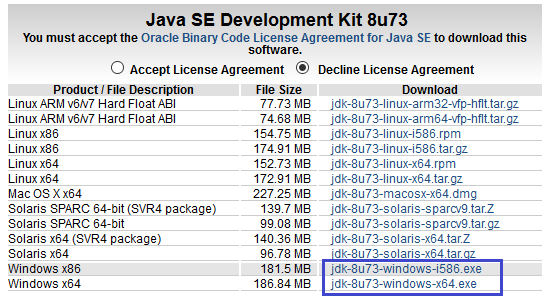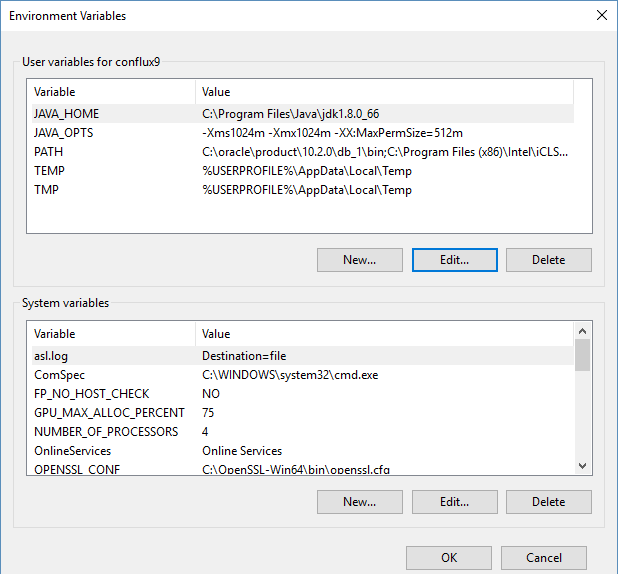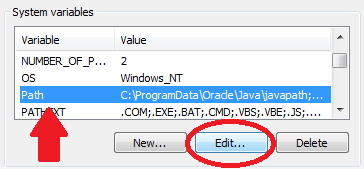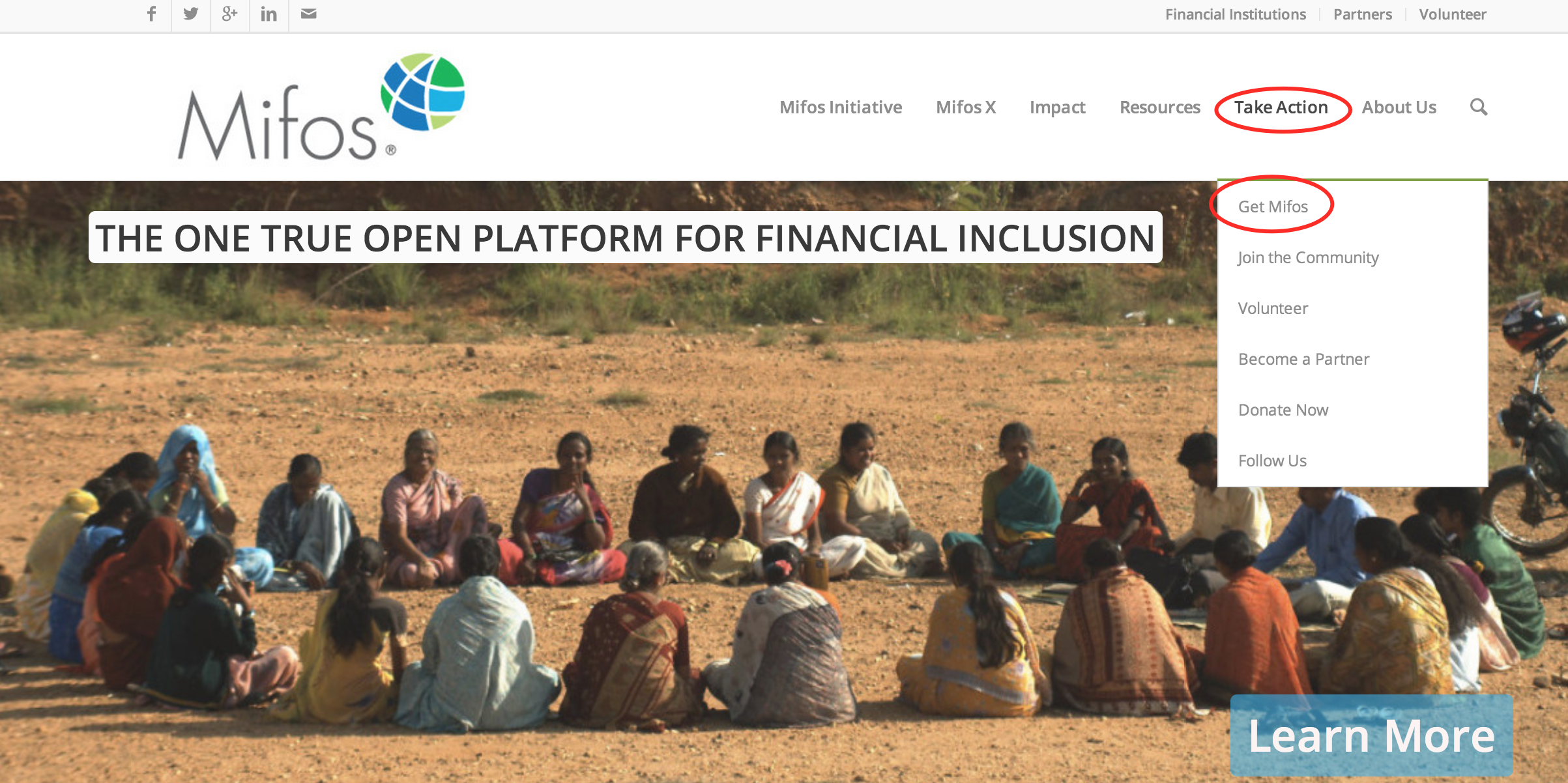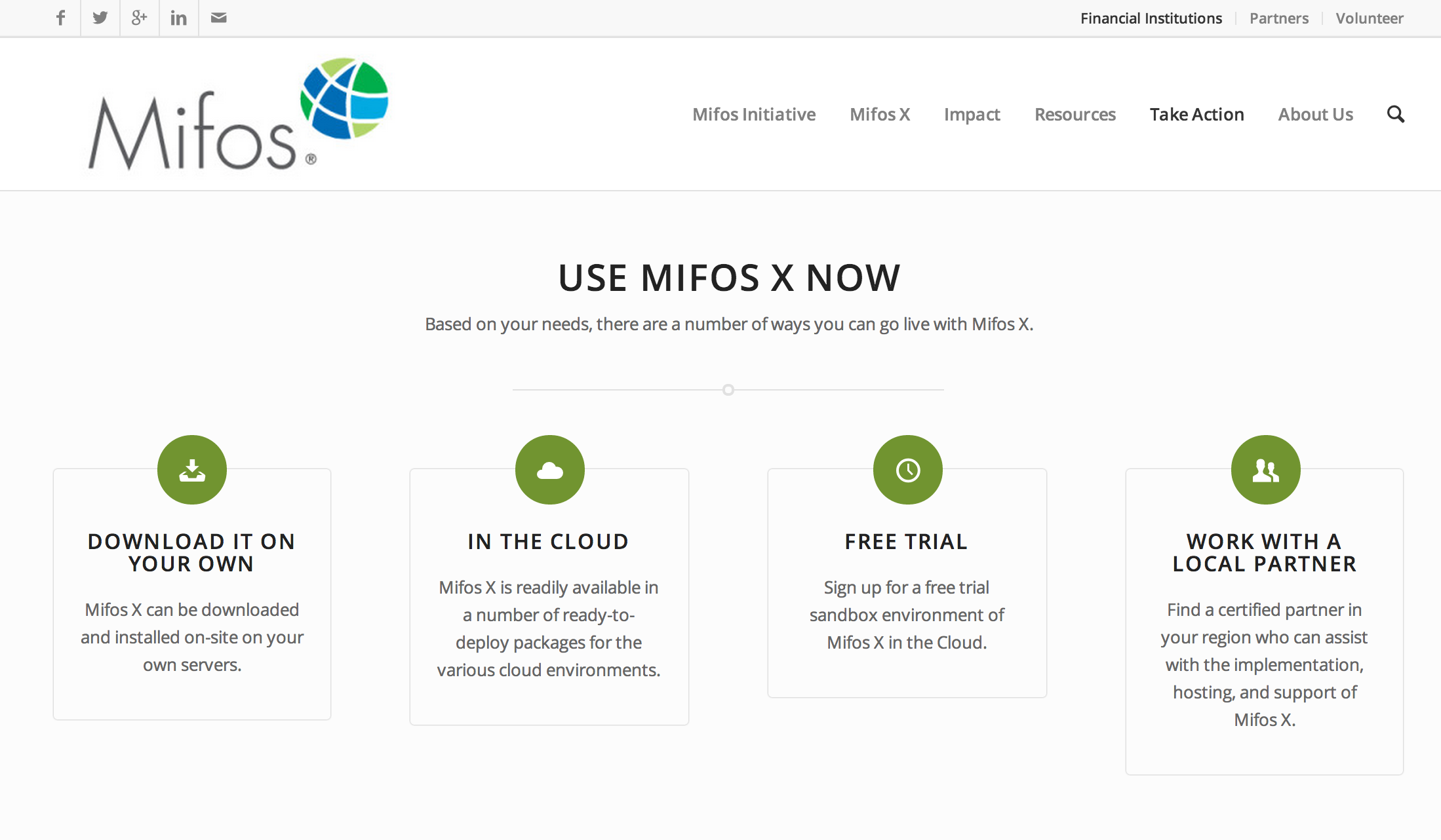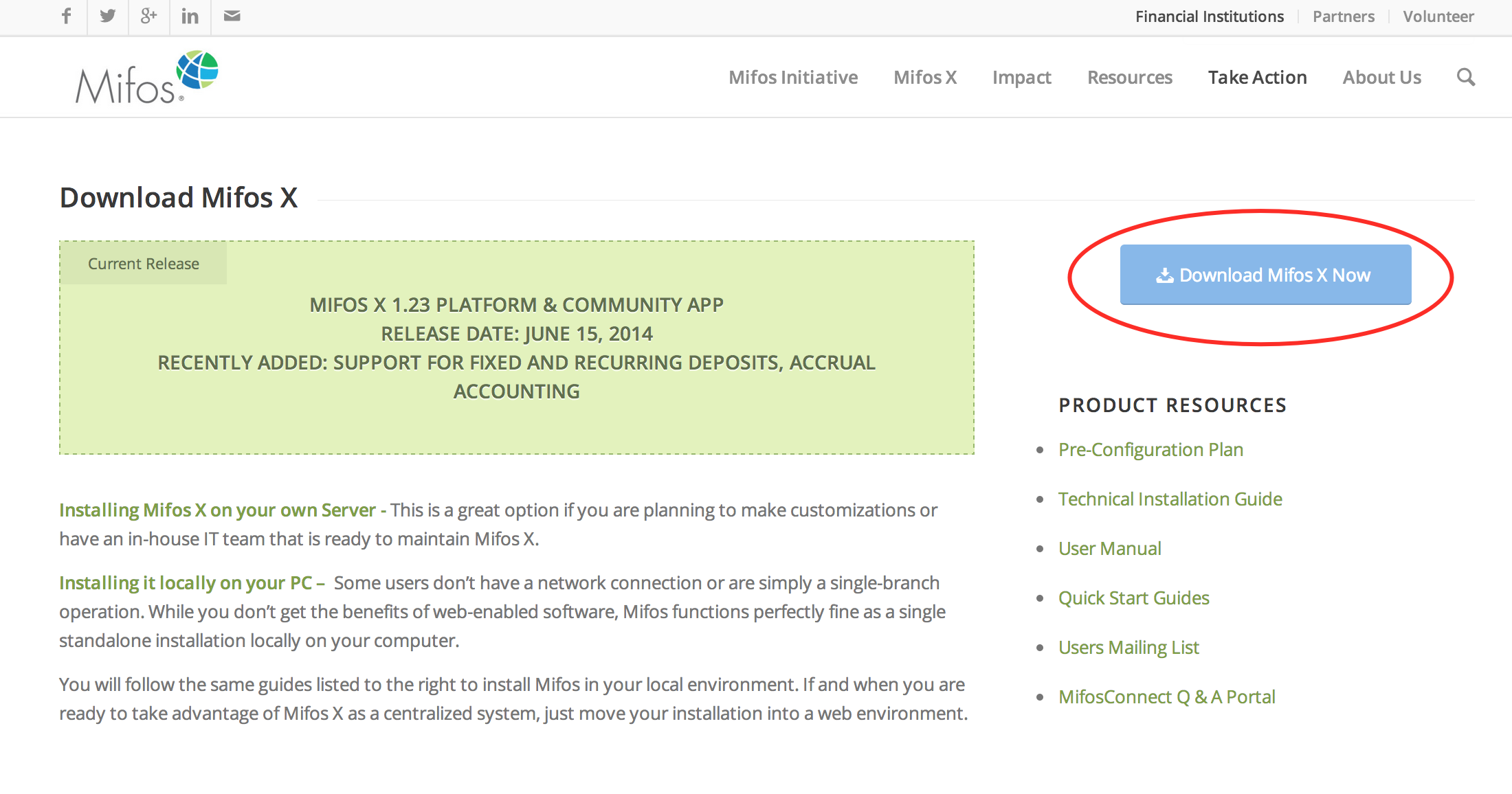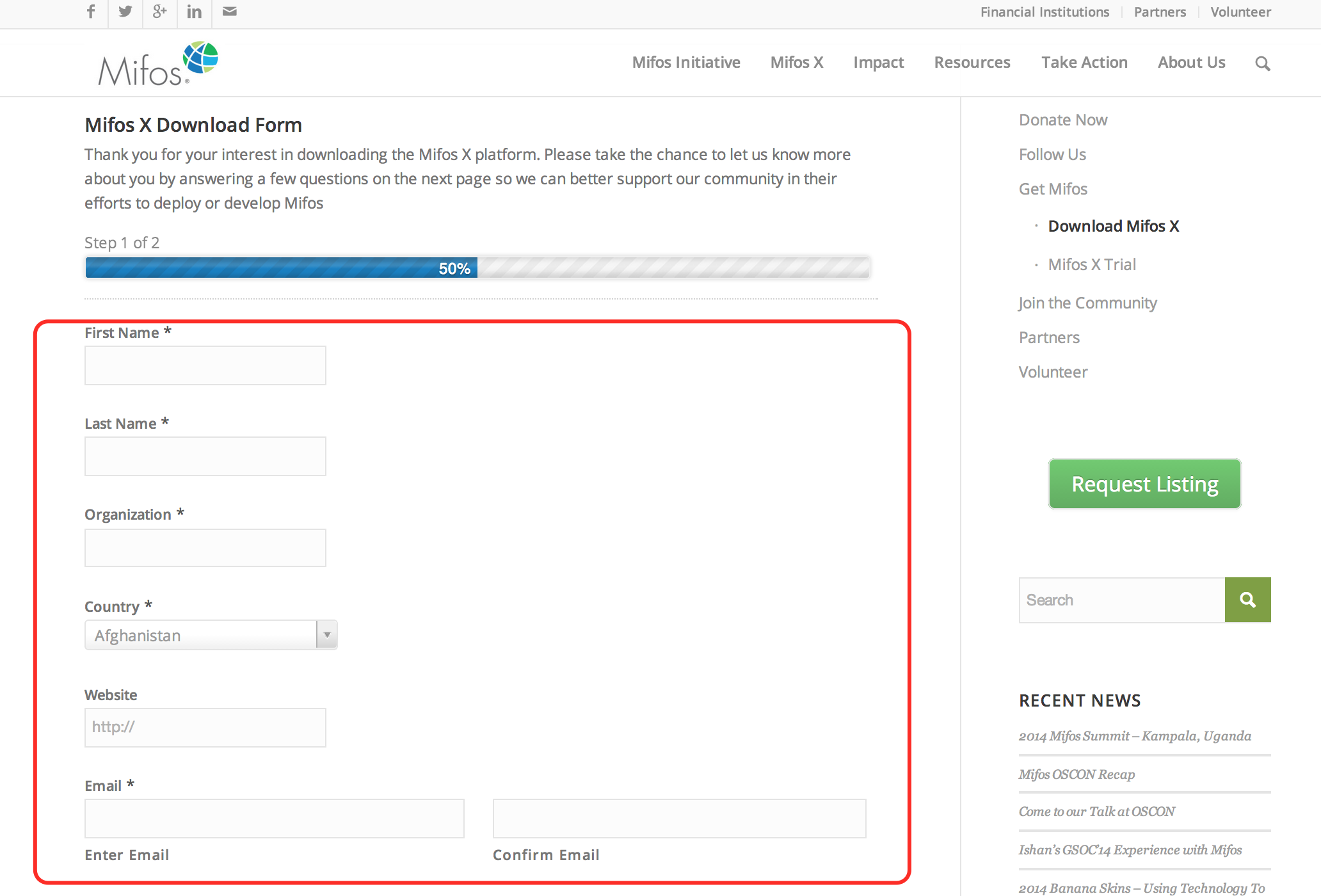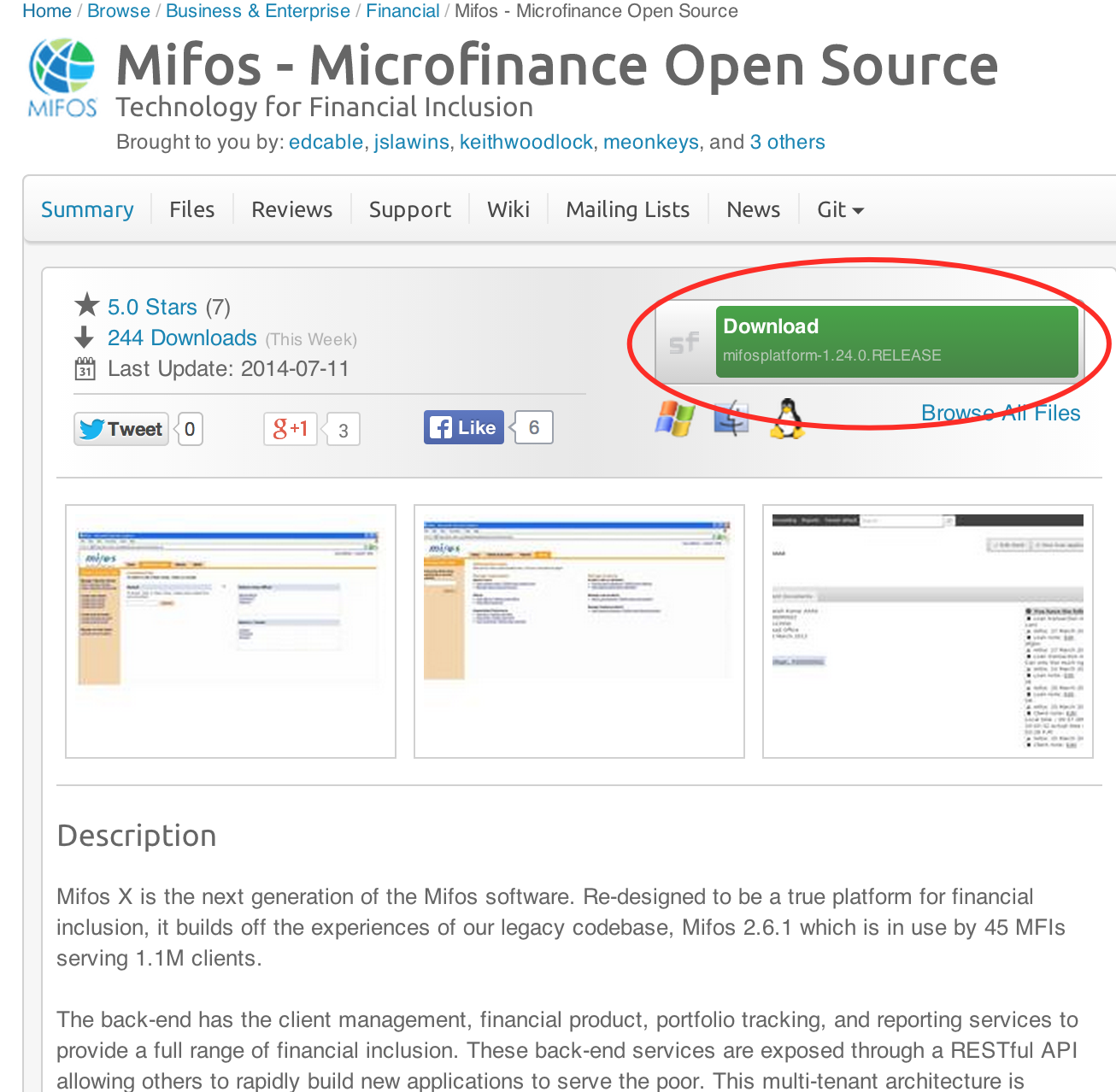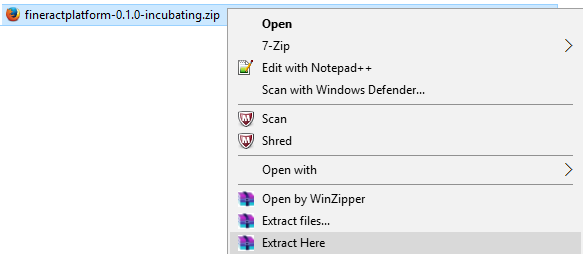For Video guide - Click on the below link
|
|
Prerequisite SoftwareNOTE: the software and versions included below are a mandatory prerequisite
|
|---|
| |
|---|---|
1) Before beginning, uninstall any existing versions of Java currently on your computer. | 2) In your web browser, go to http://www.oracle.com/technetwork/java/javase/downloads/jdk8-downloads-2133151.html, to download JAVA 1.8. |
3) Oracle requires that you read the license agreement, then click the button labeled Accept License Agreement. | 4) Click the link to download the version for your system architecture i.e. Windows x86 for 32bit or Windows x64 for 64bit. |
5) Save the Java installation file to your computer | 6) Run and install the Java file. |
...
| |
|---|---|
1) Open your Environment Variables: | 2) Create the JAVA_HOME variable:
|
3) Edit the PATH variable:
| 4) Create the JAVA_OPTS variable:
|
...
| |
|---|---|
1) Go to http://mifos.org/ from your web browser and navigate to Take Action >> Get Mifos | 2) Click on the "DOWNLOAD IT ON YOUR OWN" link |
3) Click on "Download MifosX Now" | 4) Fill out the Mifos Download Form with your information, then click the Next Page button. The download will start automatically. NOTE: You can skip the form by scrolling to the bottom of the page and clicking on: No thanks. I would just like to download Mifos without providing additional information. However, we are able to understand and serve you better if you provide details of your organization.
|
5) You will automatically be redirected to a download page for Mifos on the Sourceforge website. Here you will be prompted to download a ZIP file containing the Mifos application. NOTE: You can also download other versions directly from: | 6) Once you have download the Mifos ZIP file, extract it to a new folder on your computer. Remember this location, as you will need to refer to it later. |
...
| |
|---|---|
1) Setting up the Lib folder a) Download the mysql jdbc 5.1.27 jar file from http://central.maven.org/maven2/mysql/mysql-connector-java/5.1.27/mysql-connector-java-5.1.27.jar b) Once it's downloaded, copy & the file and paste it to the Tomcat>>lib folder, Go to Tomcat>>lib folder. NoteNOTE: If the tomcat-jdbc.jar file is not available in the tomcat>>lib folder then you could download and paste it it can be downloaded from: http://www.java2s.com/Code/JarDownload/tomcat-jdbc/tomcat-jdbc.jar.zip | 2) Generate keystore Generate a new keystore using java the Java keytool : >> Open command prompt |
3) Configure server.xml page, a) Go to tomcat>>conf>>open to tomcat>>conf, then right click on the server.xml with notepad file and select Open with>>Notepad: Below mentioned are modified with respect to reflect your system & and settings: reflect the username and password used in step 4 of the Install MySQL section above (for e | <?xml version='1.0' encoding='utf-8'?> <GlobalNamingResources> <Resource type="javax.sql.DataSource" <Service name="Catalina"> <Connector protocol="org.apache.coyote.http11.Http11Protocol" <Engine name="Catalina" defaultHost="localhost"> <Realm className="org.apache.catalina.realm.LockOutRealm"> <Host name="localhost" appBase="webapps" unpackWARs="true" autoDeploy="true"> <Valve className="org.apache.catalina.valves.AccessLogValve" directory="logs" |
4) Save the modified server.xml page Press Ctrl + S or File>SaveFile>>Save. | 5) Close Notepad. |
| Info | ||
|---|---|---|
| ||
If your any of the server port connections are using port number = 443, then you need to change your port number to 8443 , in server.xml here:- port="443" maxThreads="200" scheme="https" to port="8443" maxThreads="200" scheme="https" |
...
